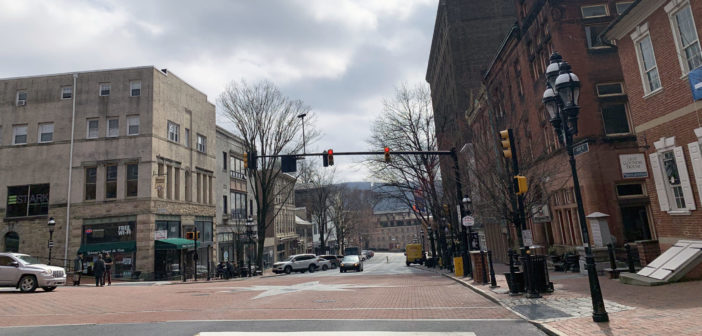After having to shut their doors for over three months due to COVID-19, Lehigh Valley restaurants were permitted to offer outdoor seating for diners on June 5 as the region entered the yellow phase of the state’s reopening plan.
While many restaurants are up and running, they have had to make significant adjustments in order to keep customers and staff safe. Bethlehem has closed portions of streets on both the North and South sides to allow restaurants to set up more tables for outdoor seating.
According to Joseph Jurkivo, owner of Fiamma Italian Grill in Bethlehem, his restaurant’s first order of action was sanitizing their outdoor seating area, purchasing gloves and custom masks for servers, and getting single-use paper menus for customers.
He said the restaurant also increased the amount of chemical sanitizer in their dishwasher to ensure all dishes are completely sterile.
“If we can do something to make the customer feel a little less stressed out during their time with us, especially with everything going on, we’re going to do it,” Jurkivo said.
Anthony Trapani, manager of ZEST Bar+Grille, said his team has taken extra precautions to preserve customer safety and ensure that all city guidelines are being met.
“As an owner, I haven’t taken a paycheck in 10 to 12 weeks.”
–Joe Jurkivo, owner of Fiamma Italian Grill
“Once we found out that we could reopen, we started the process of how to lay the tables out, how to staff — basically getting our restaurant running again after being closed for three months,” Trapani said.
Restaurants are also recovering from the financial losses of the past three months.
Walt Diller, owner of Tulum restaurant in Bethlehem, said a big hurdle for his restaurant was attracting new customers, especially after Lehigh shut down for the remainder of the spring semester in March.
“At first it was letting people know that we’re here and we’re open, (but) a lot of customers were no longer around,” Diller said. “We had to promote ourselves a little more than usual, but, once people started wanting to go out, it got a bit easier.”
Jurkivo said there were many costs he didn’t anticipate when his restaurant shifted to only filling take-out orders, including the cost of to-go containers and the fees collected by delivery services like UberEats and GrubHub.
“My costs went up from about $500 per week to $2,500 a week, and you can’t say, ‘OK I’m going to raise prices 20 percent’ because customers are also struggling,” Randazzo said. “As an owner, I haven’t taken a paycheck in 10 to 12 weeks.”
Jurkivo also expressed concern for his employees.
“This has hurt the workers (and) affected their income, which is hard because you’re with your employees every day,” he said. “You get to know them and their families, and it affects you as an owner. You try to do what you can, but there’s only so much you can do and that you’re allowed to do.”
Trapani said the biggest challenge his restaurant faced was striking a balance between staying profitable and looking out for their staff. He said his number one priority is the “safety of our staff and our customers.”
Despite the many challenges the lockdown brought, restaurant owners are relieved they can return to a sense of normalcy and become profitable again.






Comment policy
Comments posted to The Brown and White website are reviewed by a moderator before being approved. Incendiary speech or harassing language, including comments targeted at individuals, may be deemed unacceptable and not published. Spam and other soliciting will also be declined.
The Brown and White also reserves the right to not publish entirely anonymous comments.